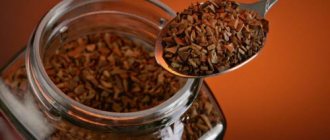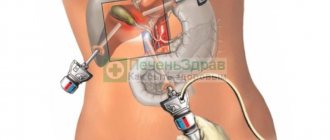Possible reasons
Irritation of the stomach mucosa
The stomach is subject to constant stress, because a person can take food several times a day, just like coffee. But not everything that enters this organ is considered useful. Sensitivity to irritants does not occur immediately, but with a chronic course, you can encounter a stomach ulcer or gastritis.
Drinking coffee on an empty stomach can provoke the appearance of unpleasant symptoms if the integrity of the mucous membrane of the gastrointestinal tract is compromised. In this case, gastric juice begins to cause vomiting without finding an object for use.
Increased blood (intracranial) pressure
It has now become a very popular explanation that nausea after coffee is due to a sharp increase in blood pressure. But hypertension tends to manifest itself not only with one symptom, but also with others, such as rapid heartbeat, weakness, dizziness, darkness in the eyes.
If one of the previously described symptoms is present along with the feeling of nausea, it is likely that the blood pressure has indeed become high. To do this, you need to take a special medical device and measure it.
IT IS IMPORTANT TO KNOW! Blood pressure may exceed acceptable values not only due to drinking another cup of coffee, but due to poor lifestyle choices, insomnia, stress, alcohol abuse, and smoking.
Low quality drink
Unsatisfactory quality of soluble powder (grains) can cause nausea. But for some reason, the abundance of sweet toppings, which are added in almost all catering organizations, does not bother anyone. People start to worry about this when they feel nauseous after drinking coffee. If possible, drink this drink at home, especially since you can prepare it in just a few short minutes.
Caffeine overdose
This is the most common reason, which applies to most of modern humanity, especially to those who drink more than 1 cup of coffee per day. Excessive consumption of this drink leads to nausea, vomiting and other unpleasant symptoms. A nuance - you can only take another portion of a coffee drink for 3-4 hours, because due to its constant intake into the body, its effect is reduced. Therefore, a person cannot cheer up.
Heaviness in the stomach: diagnosis and treatment of the symptom in combination with other signs of dyspepsia
Every person periodically experiences discomfort and discomfort in the abdominal area, especially after eating. But most often, such symptoms remain without proper attention.
Heaviness in the stomach is a sign of transient or permanent functional failure of the gastrointestinal tract. Heartburn, belching, nausea and increased gas production - all of them are included in the concept of dyspepsia syndrome and occur in various diseases.
Functional dyspepsia
Functional dyspepsia (FD) is understood as the periodic occurrence of complaints of:
- heartburn (“burning” pain behind the sternum), frequent belching;
- nausea, much less often – single vomiting;
- aching pain in the projection of the stomach;
- bloating due to increased gas formation;
- bowel dysfunction in the form of constipation.
With normal functioning of the gastrointestinal tract, the food mass from the stomach cavity gradually moves further into the duodenum. Having gone through all the stages of digestion in the small and large intestines, the chyme (bolus of food) is safely excreted. With dyspepsia, this process slows down significantly, causing pain, abdominal discomfort and bloating.
An unpleasant aspect of medical practice is that patients seek help from a doctor already with serious disorders. They try to treat relatively minor ailments on their own, guided by advertisements they see.
What can be recommended for people suffering from dyspepsia? Symptoms such as pain, bloating, severe gas formation are gradually eliminated with an integrated approach:
- For some time, antacids are used to protect the gastric mucosa (Phosphalugel, Almagel);
- pain syndrome can be relieved with antispasmodics of the No-shpa type;
- a course of prokinetics (Domperidone, Duspatalin) is also indicated;
- it is important to normalize nutrition (the frequency of food consumption should be at least 5 times a day; exclude spicy and fatty foods, smoked foods, and confectionery products from the diet);
- limit intake of alcoholic beverages, quit smoking.
More details about the causes, types, clinical picture and treatment of functional dyspepsia can be found in the article.
Poor nutrition
What to do when coffee makes you sick?
When it appears very rarely, special actions need not be taken. If periodically, then you need to perform the following steps:
- Observe coffee rituals. It is quite possible that the break between doses is not observed, or that too much coffee is drunk. To eliminate this feeling next time, simply reduce the amount of coffee and drink it when you really need it. For example, night duty, preparation for a session, etc.
- Eliminate additives in the form of cream and milk. Maybe the body reacts so sharply to them. If possible, switch to higher quality coffee. One of these is considered to be “Arabica”.
- Get a medical examination. It is possible that such a reaction is “activated” due to the presence of serious pathologies. If the doctor does not reveal anything, then he will recommend other methods.
When these steps are completed, the problem will be resolved.
Use of coffee additives
Artificial and zero-calorie sweeteners activate gut bacteria, leading to digestive problems.
Non-dairy, low-fat and artificial creamers, and artificial sweeteners are not the best additives to drinks. Cream contains harmful ingredients - hydrogenated oils, corn syrup, thickeners, and other unnatural, harmful ingredients. Dipotassium phosphate, an ingredient used to break down the acidity of coffee, can lead to diarrhea and nausea.
To reduce acidity and obtain a mild taste, add natural milk or natural cream. Doctors recommend avoiding supplements. Black coffee without sweeteners or cream is much healthier and reveals more flavor.
source
Types of coffee beans
They come in two types: Robusta (fruits of the Congolese tree) and Arabica (beans of the Arabian coffee tree).
Robusta contains almost twice as much caffeine as Arabica, so it is slightly bitter and has astringent properties. In order to get rid of bitterness, additional processing has to be carried out. Arabica has a richer and more intense taste.
When choosing coffee, first of all, you need to pay attention to the content and place of production.
Useful and harmful properties
Useful properties include:
- stimulation of the central nervous system, stimulation of mental and physical activity. Drinking just 1 cup of coffee at work can provide a boost of energy until late in the evening;
- contains antioxidants that help preserve beauty and youth. Even qualified specialists confirm this. But again, you need to drink it only in moderation. This has been mentioned before in this article;
- You can reduce the risk of developing a “sweet” disease (diabetes mellitus) due to insulin dependence. After several studies, this pattern was confirmed by medical scientists;
- improves memory and helps you concentrate on the most important moments in life.
Another very important property is that this drink can protect teeth from caries. True, after coffee there is a yellow coating on the enamel, but it can be easily removed with chewing gum.
Its harm is based on the following aspects:
- flushes calcium from the body;
- increases blood pressure. This has already been discussed, but people who drink just 1 cup a day have normal blood pressure;
- addiction. It can only happen if it is abused in the same way as other bad habits;
- can aggravate gastrointestinal diseases (gastritis, heartburn and others). Therefore, it is better to avoid it if you have problems with the gastrointestinal tract. It can be replaced, for example, with cocoa;
- insomnia, rapid heartbeat with excessive use;
- may cause tension and nervousness.
In addition, pregnant women are strictly prohibited from drinking coffee, because the baby may be born with low birth weight. By the way, you can read open access articles about this yourself, and also ask a specialist.
Coffee on an empty stomach
Lovers of the morning coffee ritual do not understand the danger to their health. Coffee drunk on an empty stomach causes serious damage to the digestive, nervous, and blood systems.
Effect on the gastrointestinal tract
The primary connection between coffee and nausea is that coffee is a strong gastrointestinal irritant and can cause stomach upset, including nausea.
When coffee enters an empty stomach, it stimulates the release of hydrochloric acid in the digestive system. Hydrochloric acid is used to break down food. Drinking coffee drinks on an empty stomach leads to indigestion and insufficient protein breakdown. Proteins that get stuck in the digestive system and are not completely dissolved cause health problems ranging from bloating, nausea, irritable bowel disease to colon carcinoma, gastritis, and ulcers.
Coffee Antioxidants
The antioxidant properties contained in coffee drink, derived from chlorogenic acid, help maintain health and treat colon cancer. Drinking coffee on an empty stomach has the opposite effect.
Drinking an invigorating drink on an empty stomach causes the stress hormone cortisol to be released directly into the bloodstream. Cortisol is needed to produce energy and maintain health. If the level constantly increases, cortisol gradually reduces serotonin reserves, leading to depression, excess weight, and deprives sleep.
Recommendations
- Do not drink coffee on an empty stomach; it should be consumed with food, before or after meals.
- Drink a glass of water during, after coffee. The body receives the necessary water, reduces the risk of nausea, water provides increased energy, and there is no need for an additional cup of an invigorating drink.
- Use dark roast coffee beans. Darker roasted beans have low acidity. Chemicals created during the roasting process make it difficult for stomach acid to form.
- Use coffee blends designed for people with stomach problems. They are “softer” for the digestive system and cause fewer attacks of nausea.
To know the causes of nausea from coffee drinks, it is important to understand what caffeine is. It stimulates the central nervous system.
Stimulants have a huge impact on the human body: they increase the production of adrenaline, speed up the heart rate and breathing, and increase blood pressure. Caffeine has serious effects. Stimulant effects may cause headache, anxiety, insomnia, dizziness, excitability, poor concentration and nausea.
High caffeine content leads to dehydration, a major factor in nausea.
- Drink coffee within normal limits. Reactions to coffee drinks vary; the amount of coffee that is suitable for one person produces side effects for another. A safe amount of consumption is 250-350 mg of caffeine or 3 cups per day.
- Reduce the strength, change the cooking method.
- Choose heavily roasted beans. The strength of coffee is affected by the type of roast and quantity. Dark roasts contain less caffeine than light roasts.
- Start adding more water and milk, then the concentration of caffeine in the drink will decrease.
- If caffeine is prohibited for medical reasons, a decaffeinated coffee drink or tea is an excellent substitute.
Folk remedies for nausea after coffee
The following methods will help alleviate the condition after a caffeine overdose:
- take the leaves of lingonberry, St. John's wort, mint or chamomile and make strong tea from them. It is recommended to drink it in small sips. If you don’t have time to prepare it, you can simply chew the leaves;
- aromatherapy. Essential oils such as lavender, raspberry, lemon, tangerine have proven themselves well;
- ginger tea with lemon. The beneficial properties of ginger are probably already familiar to everyone: it neutralizes hydrochloric acid in gastric juice, thereby eliminating the feeling of nausea;
- grind 100 gr. dried cranberries 200 gr. lingonberries. Pour 2.5 cups of boiling water and leave to steep for a couple of hours. Next, do everything as usual, strain and take 50 ml up to 6 times a day.
In addition, you can take a special remedy. In addition, most of them are available without a doctor's prescription. For example, it could be: “Promethazine”, “Prochlorperazine”, “Metoclopramide” and some others.
If nausea has been bothering you for quite a long time, it is necessary to analyze what this may be due to. It makes sense for girls to take a pregnancy test. In other cases, undergo a full medical examination followed by a course of treatment. Perhaps this way it will be possible to solve the problem.
What to do with nausea and vomiting: instructions
Nausea and vomiting, characteristic of acute gastritis, are very exhausting for a person - both physically and psychologically.
An unpleasant taste in the mouth, a feeling of constriction in the throat, a burning sensation in the epigastrium, trembling, increased body temperature - this is not a complete list of “pleasures” that usually accompany vomiting.
How to deal with nausea and vomiting?
Treatment always depends directly on the causes. To find out, remember how you ate the day before and what medications you took.
If you wish, read the article “Nausea, vomiting, temperature” on our website - there is a list of the most likely explanations for the painful condition.










